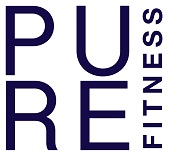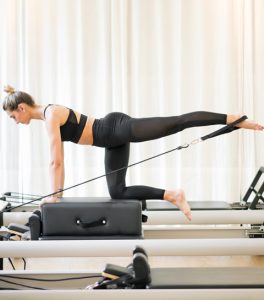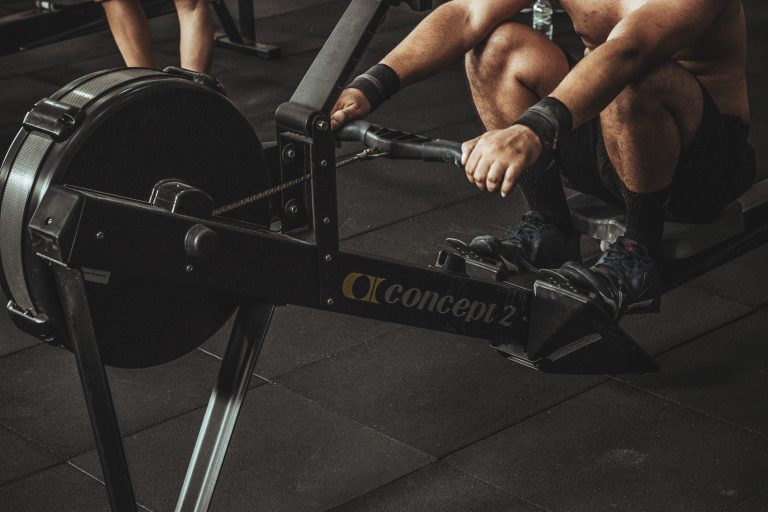Looking to shed those extra pounds but bored with traditional workouts? Look no further than Pilates. This low-impact exercise method, originally developed by Joseph Pilates in the early 20th century, has gained popularity worldwide for its numerous benefits. Not only does Pilates help improve flexibility, strength, and posture, but it can also be an effective tool for weight loss. In this article, we will explore whether Pilates is truly a beneficial exercise for shedding those unwanted pounds and why it might just be the workout you’ve been searching for.
Table of Contents
ToggleOverview of Pilates as an Exercise
What is Pilates?
Pilates is a form of exercise that focuses on strengthening the body’s core muscles, improving flexibility, and enhancing overall body strength. It combines elements of yoga, martial arts, and calisthenics to create a unique and effective workout routine.
Origins of Pilates
Pilates was developed in the early 20th century by Joseph Pilates, a German physical trainer. He created the exercise method as a way to rehabilitate injured athletes and dancers. Over the years, Pilates has gained popularity worldwide and is now practiced by people of all fitness levels and ages.
Key Principles of Pilates
There are several key principles that form the foundation of Pilates exercises. These principles include concentration, control, centering, precision, breath, and flow. By incorporating these principles into each movement, Pilates helps individuals develop better body awareness, alignment, and muscular control.
The Relationship between Exercise and Weight Loss
Understanding Weight Loss
Weight loss occurs when the body burns more calories than it consumes. This energy deficit forces the body to tap into its fat stores for fuel, resulting in weight loss. While a calorie deficit can be achieved through dietary changes alone, exercise plays a crucial role in increasing calorie expenditure and assisting with weight loss.
Types of Exercises for Weight Loss
Various types of exercise can contribute to weight loss. Cardiovascular exercises such as running, cycling, and swimming are known for their ability to burn calories. Strength training exercises, which build lean muscle mass, also play a role in weight loss as muscles have a higher metabolic rate and can burn calories even at rest.
What Makes an Exercise Beneficial for Weight Loss
An exercise is considered beneficial for weight loss when it effectively burns calories, increases muscle mass, and improves overall fitness. It is important to choose exercises that are enjoyable and sustainable to maintain long-term adherence and maximize weight loss results.
Benefits of Pilates for Weight Loss
Increased Muscle Strength and Tone
Pilates is renowned for its ability to strengthen and tone the muscles throughout the body. The exercises target not only the superficial muscles but also the deep stabilizing muscles, which are crucial for maintaining good posture and overall body strength. With increased muscle strength, the body becomes more efficient at burning calories and can contribute to weight loss.
Improved Posture and Body Awareness
One of the key focuses of Pilates is improving posture and body awareness. By practicing proper alignment and engaging the core muscles, individuals can develop better posture, which not only looks aesthetically pleasing but also aids in weight loss. Good posture promotes optimal muscle engagement, helping to burn more calories during exercise and throughout daily activities.
Enhanced Flexibility and Range of Motion
Flexibility is an important aspect of fitness that often gets overlooked. Pilates incorporates stretching exercises that help improve flexibility and range of motion in the joints. With increased flexibility, individuals can perform exercises more effectively, prevent injuries, and engage a wider range of muscles, which can aid in weight loss.
Calorie Burning Potential of Pilates
The Role of Calories in Weight Loss
To understand the calorie burning potential of Pilates, it is important to first grasp the role of calories in weight loss. Calories are units of energy supplied by food. The body requires a certain number of calories to carry out its daily functions. Consuming fewer calories than expended creates a calorie deficit, leading to weight loss.
Calories Burned during Pilates
The number of calories burned during a Pilates session varies depending on factors such as body weight, intensity of exercise, and duration of the workout. On average, a 150-pound individual can burn around 270 calories during a one-hour Pilates class. While this may not be as high as some cardiovascular exercises, the total calorie burn can still contribute to weight loss when combined with a balanced diet and other forms of exercise.
Comparison with Other Exercises
When compared to high-intensity cardio exercises like running or cycling, Pilates may not burn as many calories. However, what sets Pilates apart is its ability to simultaneously strengthen and tone the muscles while promoting proper alignment and control. The combination of these benefits can have a significant impact on overall body composition, indirectly aiding in weight loss.
Pilates as a Low-Impact Exercise
What is Low-Impact Exercise?
Low-impact exercises are those that place minimal stress on the joints, making them suitable for individuals with joint pain or injuries. Unlike high-impact exercises like running or jumping, which can be hard on the joints, Pilates is considered a low-impact exercise due to its controlled and fluid movements.
Reduced Risk of Injury
One of the significant advantages of Pilates is its low risk of injury. With its focus on controlled movements and proper form, Pilates minimizes strain on the joints and reduces the likelihood of overuse injuries. This makes it an excellent choice for individuals looking to lose weight without placing excessive stress on their bodies.
Suitability for Different Fitness Levels
Pilates can be modified to suit individuals of all fitness levels, from beginners to advanced practitioners. The exercises can be adapted to accommodate specific needs and can be made more challenging as strength and flexibility improve. This versatility ensures that Pilates remains a viable and effective exercise option throughout different stages of a weight loss journey.
Building Lean Muscle Mass with Pilates
Benefits of Lean Muscle for Weight Loss
Lean muscle mass plays a crucial role in weight loss. As muscles have a higher metabolic rate than fat, having more lean muscle increases the body’s calorie-burning potential even at rest. Pilates exercises, which target all major muscle groups, can contribute to the development of lean muscle mass.
How Pilates Builds Lean Muscle
Pilates utilizes resistance training principles to build lean muscle. The controlled movements and use of equipment such as resistance bands or exercise balls provide resistance for the muscles to work against. This resistance stimulates muscle growth and helps improve overall body composition, leading to greater weight loss.
Combining Pilates with Strength Training
While Pilates can effectively build lean muscle, combining it with traditional strength training exercises can further enhance weight loss results. Strength training exercises, such as weightlifting or bodyweight exercises, complement Pilates by targeting specific muscle groups, increasing overall muscle mass, and boosting the metabolism for sustainable weight loss.
Core Strengthening with Pilates
Importance of Core Strength for Weight Loss
A strong core is vital for weight loss as it provides stability and support for the entire body. Core muscles, including the abdominals, back muscles, and pelvic floor, play a key role in maintaining good posture, stabilizing the spine, and facilitating efficient movement. Pilates focuses extensively on core strengthening, making it an excellent choice for those looking to lose weight and improve their overall fitness.
Effective Core Exercises in Pilates
Pilates includes various exercises that target the core muscles. Examples of effective core exercises include the Pilates Hundred, Pilates Roll-Up, and Plank variations. These exercises engage the deep core muscles, improving strength and stability while helping to burn calories, leading to increased weight loss.
Impact on Overall Fitness and Weight Loss
A strong core not only supports weight loss efforts but also improves overall fitness. A strong core helps to prevent injuries, supports proper posture, and enhances athletic performance. By incorporating Pilates into a weight loss journey, individuals can strengthen their core muscles to achieve optimal fitness and overall well-being.
Pilates and Mindfulness for Weight Loss
The Mind-Body Connection in Pilates
Pilates emphasizes the mind-body connection, encouraging individuals to focus on the precise execution of each movement and be present in the moment. This focus on the mind-body connection helps individuals develop a greater sense of body awareness and control, which can positively impact weight loss efforts.
Managing Emotional Eating through Mindfulness
Emotional eating, which involves eating in response to emotions rather than hunger, can hinder weight loss progress. Pilates, with its emphasis on mindfulness, can help individuals become more aware of their emotions and the triggers for emotional eating. By practicing mindfulness and staying present, individuals can better manage their emotional eating habits and make healthier choices, contributing to long-term weight loss success.
Reduced Stress and Improved Sleep
Stress and lack of sleep can have a significant impact on weight loss efforts. Pilates, with its focus on controlled movements and breathing, helps reduce stress levels and promotes relaxation. Additionally, regular Pilates practice has been found to improve sleep quality, which is essential for weight loss and overall well-being.
Other Factors to Consider
Importance of Balanced Diet for Weight Loss
While Pilates can be a beneficial exercise for weight loss, it is important to remember that diet plays a significant role in achieving and maintaining a healthy weight. A balanced diet that includes a variety of nutritious foods is crucial for sustainable weight loss. Pilates should be seen as a complement to a balanced diet rather than a standalone solution.
Variety and Frequency of Exercises
To maximize weight loss results, it is important to incorporate a variety of exercises into your routine. Including cardiovascular exercises, strength training, and flexibility training alongside Pilates can create a well-rounded fitness program that supports weight loss. Varying your exercises and increasing intensity as you progress can also prevent plateaus and keep your workouts challenging.
Individual Differences and Personal Goals
It is essential to acknowledge that weight loss and fitness are unique to each individual. Factors such as age, genetics, and overall health can influence weight loss results. It is important to set realistic goals and listen to your body throughout your weight loss journey. Pilates can be a valuable component of a personalized fitness plan tailored to your specific needs and goals.
Conclusion
Pilates is a beneficial exercise for weight loss due to its ability to increase muscle strength and tone, improve posture and body awareness, and enhance flexibility and range of motion. Although Pilates may not burn as many calories as high-intensity cardio exercises, its low-impact nature makes it suitable for individuals of all fitness levels and reduces the risk of injury. Additionally, Pilates builds lean muscle mass, strengthens the core, promotes mindfulness, and contributes to overall well-being. When combined with a balanced diet, varied exercise routine, and personalized goals, Pilates can be a valuable tool in achieving and maintaining weight loss.








